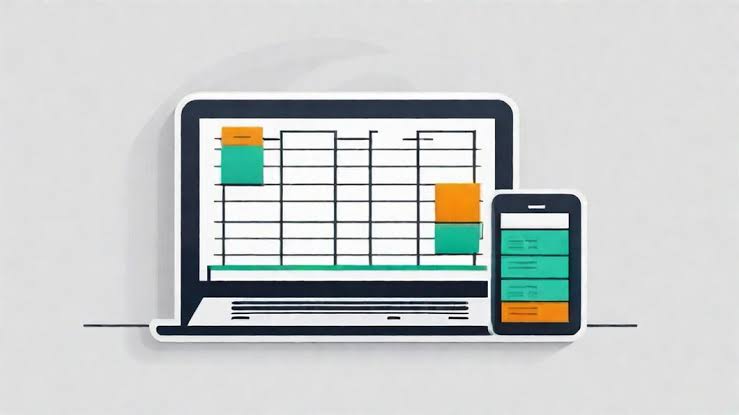Spreadsheets have become a daily tool for organizing data, making calculations, and keeping track of important information. Whether you use them for budgeting, work reports, or even personal tasks, you’ve likely come across the term “spreadsheet rectangles.” But what exactly are spreadsheet rectangles, and why are they so important?
In this blog post, we’ll dive into what spreadsheet rectangles are, how they function, and why they play a crucial role in creating and managing spreadsheets efficiently. If you’re looking to make your spreadsheets work better for you, keep reading!
What Are Spreadsheet Rectangles?
In the world of spreadsheets, the term spreadsheet rectangles refers to the individual cells where data is entered. These rectangles are formed by the grid structure of rows and columns in programs like Microsoft Excel or Google Sheets. The combination of rows (horizontal) and columns (vertical) creates a grid, with each cell appearing as a small rectangle.
Cells, or these tiny rectangles, are where you input data, formulas, and functions. Each cell has a unique address based on its location in the spreadsheet. For example, the cell located in column “A” and row “1” is referred to as “A1.” Think of spreadsheet rectangles as building blocks that form the foundation of your entire spreadsheet. Understanding how to use and manipulate these rectangles will help you get the most out of your spreadsheets.
Why Are Spreadsheet Rectangles Important?
Spreadsheet rectangles may seem simple, but they play a big role in the way you handle data. Each cell allows you to:
- Enter Data: You can input numbers, text, or even dates into each rectangle, organizing your information in a structured way.
- Run Calculations: Formulas are often entered into specific cells to perform calculations, like adding numbers or finding averages.
- Organize Information: Spreadsheet rectangles allow you to sort and filter data, making it easier to read and analyze.
Because of these functions, the efficient use of spreadsheet rectangles is crucial for keeping your data well-organized and easy to manage.
How Do Spreadsheet Rectangles Work?
Understanding how spreadsheet rectangles work will help you unlock the full power of your spreadsheets. Here’s a basic breakdown of how they function:
- Row and Column System: Rows run horizontally across the spreadsheet, while columns run vertically. The intersection of a row and a column forms a rectangle, or cell, where data is stored.
- Cell Addressing: Each cell has a unique reference based on its row and column. For instance, the top-left cell is always called “A1” because it’s in column “A” and row “1.”
- Data Types: You can store different types of data in each rectangle. This includes:
- Text: Words or labels
- Numbers: Digits used in calculations
- Dates: Specific days and times
- Formulas: Instructions for the spreadsheet to perform calculations
- Formatting Cells: You can change the appearance of cells to highlight important data. This includes altering the size, color, or font of your spreadsheet rectangles.
- Merging Rectangles: Sometimes, it’s useful to merge multiple cells into one larger rectangle to display headers or large amounts of text.
Best Practices for Using Spreadsheet Rectangles
Now that you know what spreadsheet rectangles are and how they work, here are some tips for using them effectively:
- Keep It Simple: Don’t over-complicate your spreadsheet by merging too many cells or using unnecessary formatting. Simple, clean layouts are usually the most effective.
- Use Formulas Wisely: Spreadsheet rectangles can contain powerful formulas, but try not to overload your spreadsheet with complex calculations unless necessary.
- Organize Data Properly: Use your rectangles to clearly label and organize your information. Keep text in one column, numbers in another, and ensure your headings are easy to understand.
- Freeze Key Rectangles: If your spreadsheet gets too big, freeze the top row or left column so that important labels stay visible as you scroll through the data.
Common Mistakes When Using Spreadsheet Rectangles
While spreadsheet rectangles are easy to use, there are some common mistakes that people often make:
- Merging Too Many Cells: Merging rectangles can mess with your ability to sort and filter data, so use this feature sparingly.
- Over-formatting: Too many colors, fonts, and borders can make your spreadsheet look cluttered and confusing. Stick to a simple design for clarity.
- Inconsistent Data Entry: If you enter numbers as text or mix different types of data in the same column, it can throw off calculations or sorting functions.
Conclusion: Mastering Spreadsheet Rectangles
Spreadsheet rectangles may be basic in concept, but mastering them can significantly boost your data management skills. By understanding how to use these small yet mighty cells effectively, you’ll be able to organize, calculate, and present data more efficiently. The next time you open a spreadsheet, remember that each rectangle holds the potential to make your work smarter and easier!
Frequently Asked Questions (FAQs)
1. What is a spreadsheet rectangle? A spreadsheet rectangle is another name for a cell in a spreadsheet. It’s where you enter and store data, formed at the intersection of rows and columns.
2. How do I reference a specific spreadsheet rectangle? Each cell has a unique address, determined by its column and row. For example, the cell in column “B” and row “3” is called “B3.”
3. Can I merge spreadsheet rectangles? Yes, you can merge multiple cells into one larger rectangle, which is helpful for titles or large chunks of text.
4. How do I format spreadsheet rectangles? You can adjust the size, color, and font of cells to make your spreadsheet more readable and visually appealing.
5. What kind of data can I enter into a spreadsheet rectangle? You can enter text, numbers, dates, and even formulas to perform calculations in spreadsheet rectangles.
6. Why do some people overuse merging in spreadsheets? Merging too many cells can complicate the sorting and filtering of data. It’s best to use merging only when absolutely necessary.
